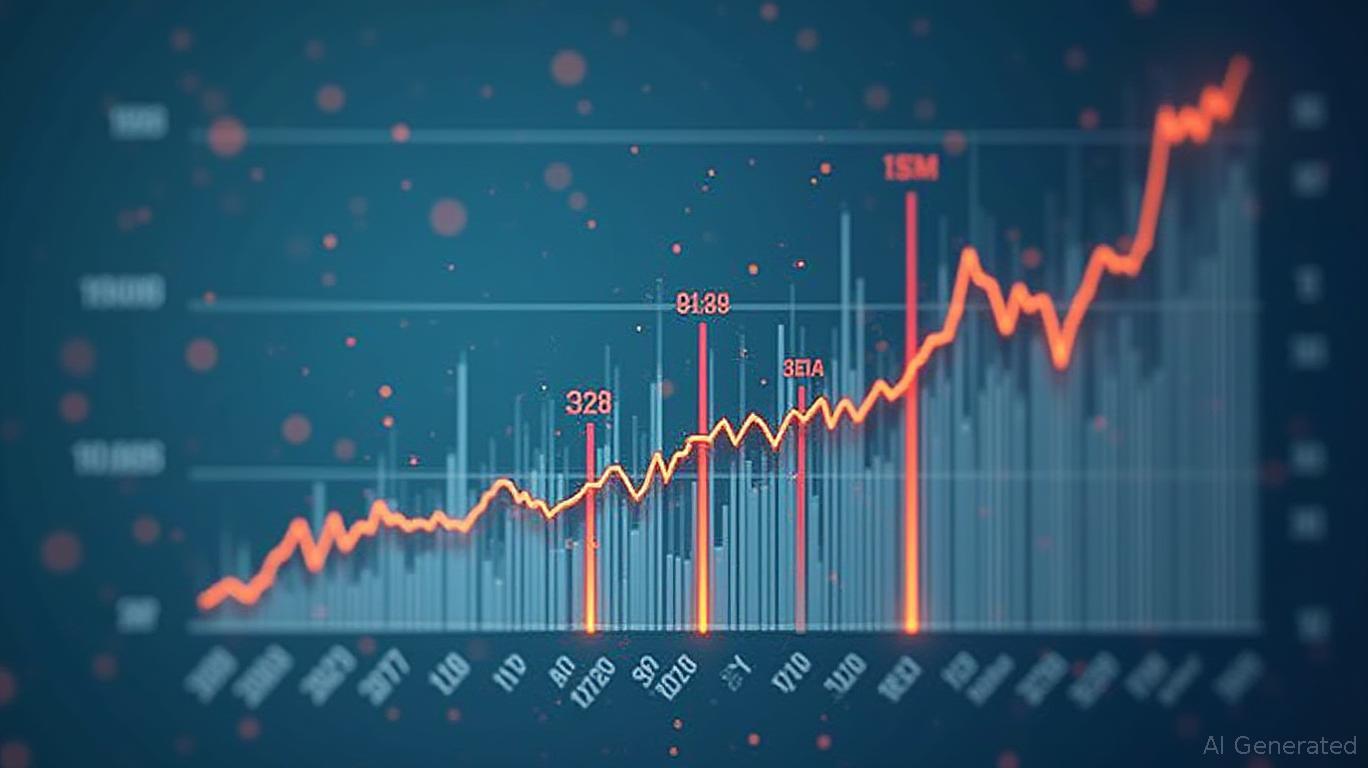JBT Marel's Q1 2025 Earnings: Navigating Uncertainty with Resilient Performance
The food processing equipment giant jbt marel Corporation delivered a robust start to 2025, showcasing resilience amid global macroeconomic headwinds. In its first-quarter earnings call, the company reported strong order intake, adjusted earnings growth, and progress on integration synergies, though uncertainties around trade policies and tariffs remain top risks. Here’s a deep dive into the key takeaways for investors.

Financial Highlights: A Solid Quarter, Despite Headwinds
JBT Marel reported Q1 revenue of $854 million, with over 50% of sales derived from recurring products and services—a testament to the durability of its customer relationships. Orders surged to $916 million, bolstering the backlog to $1.3 billion, signaling healthy demand across poultry, meat, beverages, and pharmaceutical sectors. Adjusted EBITDA rose to $112 million, or 13.1% of revenue, while adjusted EPS of $0.97 beat the Zacks consensus estimate of $0.82.
Ask Aime: "Q1 revenue of $854 million shows JBT Marel's resilience; orders surge to $916 million"
However, net income from continuing operations dipped to $(173 million) due to non-cash charges, including a $147 million pension settlement and $74 million in merger-related expenses. These one-time costs clouded the top-line results but were largely anticipated.
Strategic Progress: Synergies and Restructuring on Track
The company reiterated its commitment to delivering $35–$40 million in annualized cost synergies by 2025, with a longer-term target of $80–$90 million in annualized savings by year-end. Q1 restructuring costs of $11 million are expected to yield $12–$15 million in annual savings this year, with $50–$60 million in run-rate benefits by 2025. Supply chain initiatives, including vendor negotiations and reshoring, are also on track to deliver $15 million in annual savings and $30 million in run-rate benefits by year-end.
CEO Brian Deck emphasized the integration’s progress: “We’re seeing meaningful execution on our synergy targets, which will drive margin expansion over the coming quarters.”
Challenges and Risks: Navigating Trade Policy Uncertainties
While the results were encouraging, JBT Marel faces significant macroeconomic risks. The company suspended its full-year 2025 guidance, citing “evolving global trade and tariff policies” that could impact costs and demand. Management noted proactive measures, such as price increases, vendor concessions, and reshoring suppliers to mitigate tariff-related expenses.
The Q2 outlook includes a $10–$15 million tailwind from forex, but analysts will monitor how trade tensions affect margins. CFO Matt Meister warned, “We’re seeing cost pressures in certain regions, but our diversified customer base and holistic solutions are helping us navigate these challenges.”
Q2 Guidance: Caution Meets Optimism
For Q2 2025, the company expects:
- Revenue of $885–$915 million, aided by strong backlog conversion.
- Adjusted EBITDA margins of 14.5%–15.25%, reflecting operational efficiency gains.
- Adjusted EPS of $1.20–$1.40, up from Q1’s $0.97.
The guidance suggests confidence in execution, though investors should note that $25–$30 million in full-year restructuring costs and ongoing M&A expenses could weigh on GAAP results.
Conclusion: A Resilient Play in a Volatile Market
JBT Marel’s Q1 results demonstrate its ability to deliver top-line growth and cost discipline even amid external pressures. The backlog expansion to $1.3 billion, adjusted EPS beat, and progress on $50–$60 million in run-rate synergies by year-end are compelling positives.
However, the suspension of full-year guidance underscores the risks tied to trade policies and inflation. Investors should weigh these risks against the company’s strong recurring revenue streams, diversified end markets, and $1.3 billion in liquidity as of March 2025.
For long-term investors, JBT Marel remains a defensive play in the industrial sector, with its equipment and software solutions critical to global food production. While near-term volatility is likely, the company’s execution on synergies and its proactive cost management strategies position it well to capitalize on long-term demand for food processing automation.
In short: Buy for the long term, but monitor trade policy developments and Q2 execution closely.



_e45148e31749146201654.jpeg)






